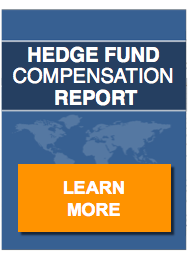Bill Gross has spent the past several months beating the drum for a rate hike. His reasons for taking this position are fairly obvious. Mr. Gross is in the bond market. Many of those favoring the status quo also have ulterior motives, so please understand…this is no condemnation of Mr. Gross’ position on the subject of a rate hike. Excellent arguments can be made on both sides.
Bill Gross’ Rate Hike Argument
In Bill Gross’ recent Bloomberg Radio interview with Tom Keene and Michael McKee, Gross spells out his reasons for being 100% certain that the FOMC will vote to raise rates at the December meeting.
Gross cites the following two points as the basis for his position:
#1) October non-farm payroll employment increased by 271,000
#2) Wages increased more than at any time in the past 6 years
If It Was Only That Simple
While these two points are irrefutable, their significance to the FOMC and its Chair, Janet Yellen, is open to debate. The FOMC is charged with holding inflation in check and ensuring labor market durability.
The Bureau of Labor Statistics (BLS) report states unequivocally, the number of unemployed persons remains essentially unchanged in October and unemployment rates in major worker groups also remains static. One month’s results are not indicative of a trend and are not suggestive of any certainty with regard to labor market durability.
By Mr. Gross’ logic, the FOMC would have implemented a rate increase in December 2014, when the BLS report revealed that November 2014 non-farm payroll increased by more than 400,000. Despite this robust job growth, no rate increase materialized.
Similarly, Mr. Gross’ point regarding the leap in wage increases, fails to comprehend the 5% decline in wages that occurred in the aftermath of the financial crisis. The month-over-month increase amounts to 0.6 percent and, the average of September and October is a paltry 0.4 percent. This two month average is actually lower that the 0.5 percent increase wages saw in August 2015. In short, the BLS report provides no definitive evidence that wages are experiencing sharp upward momentum.
Digging Deeper
The November 2015 BLS report reveals other substantive reasons for the FOMC to refrain from a rate increase in December. For example, the labor force participation rate was unchanged in October and, has remained at current levels for most of 2015. The most telling detail of the report is an acknowledgement that the manufacturing, wholesale trade, transportation and warehousing, information, and financial industries showed little or no change in month-over-month employment numbers and, the mining industry actually lost 5000 jobs.
The Most Compelling Argument Against a Rate Hike
How will Janet Yellen and the FOMC explain a rate hike to 65 million social security recipients who have been denied a cost of living increase because the government has determined that the inflation rate is zero? Incidentally, 2016 marks the third time the Obama administration has announced a freeze on the cost of living increase to social security beneficiaries.
A rate hike, widely viewed as a mechanism to cool an overheated economy, is hardly defensible in view of the virtually flat Consumer Price Index the administration cites as its reason for denying recipients an increase.
For the FOMC to implement a rate hike on the heels of the administration’s denial of a cost of living increase is like cancelling Christmas because the Pope is coming to visit.


